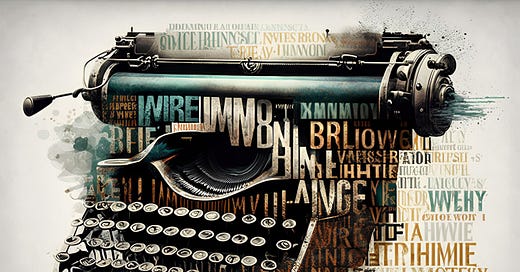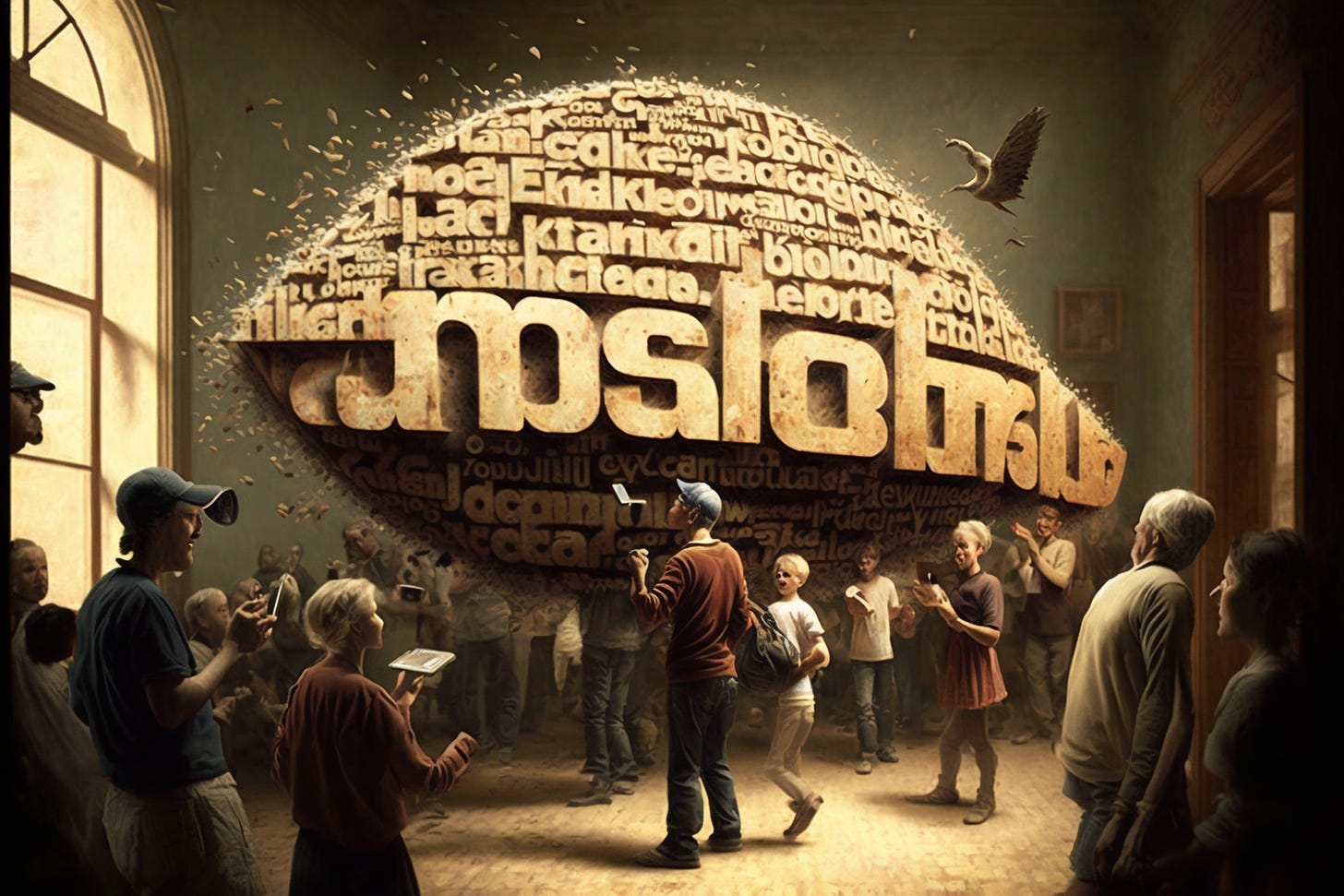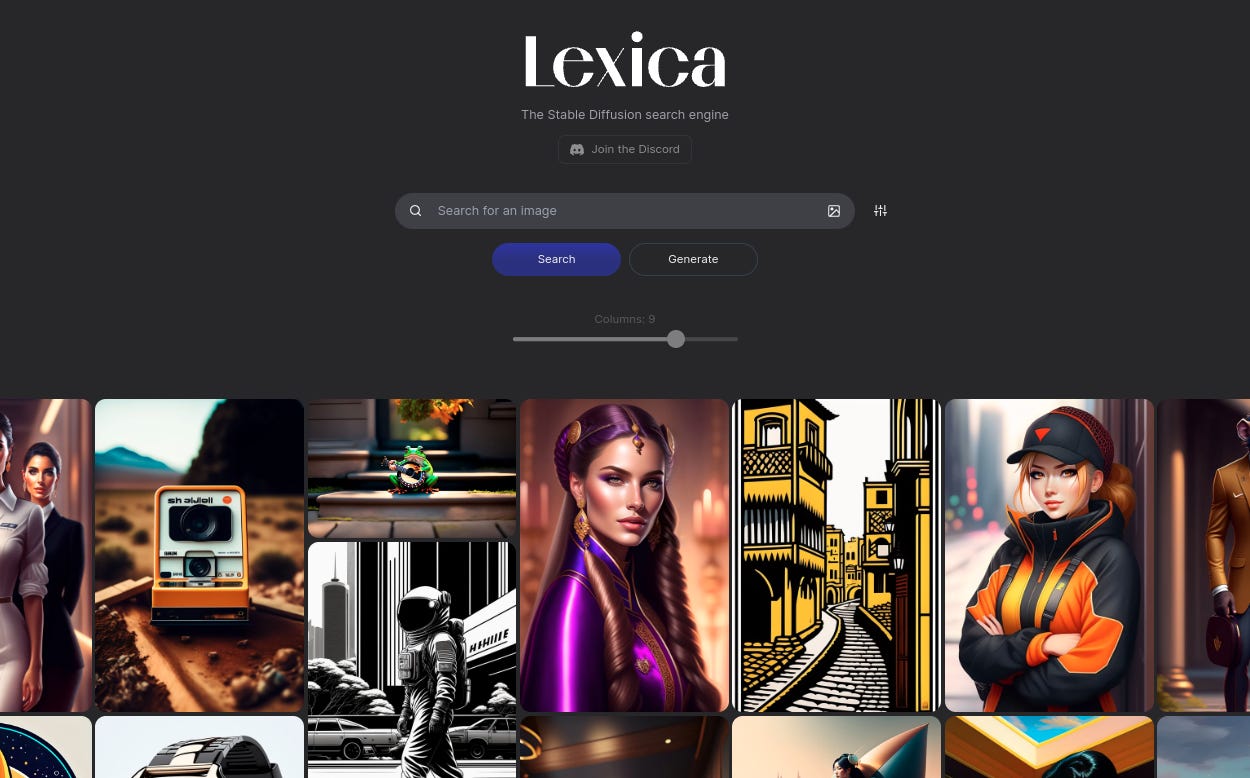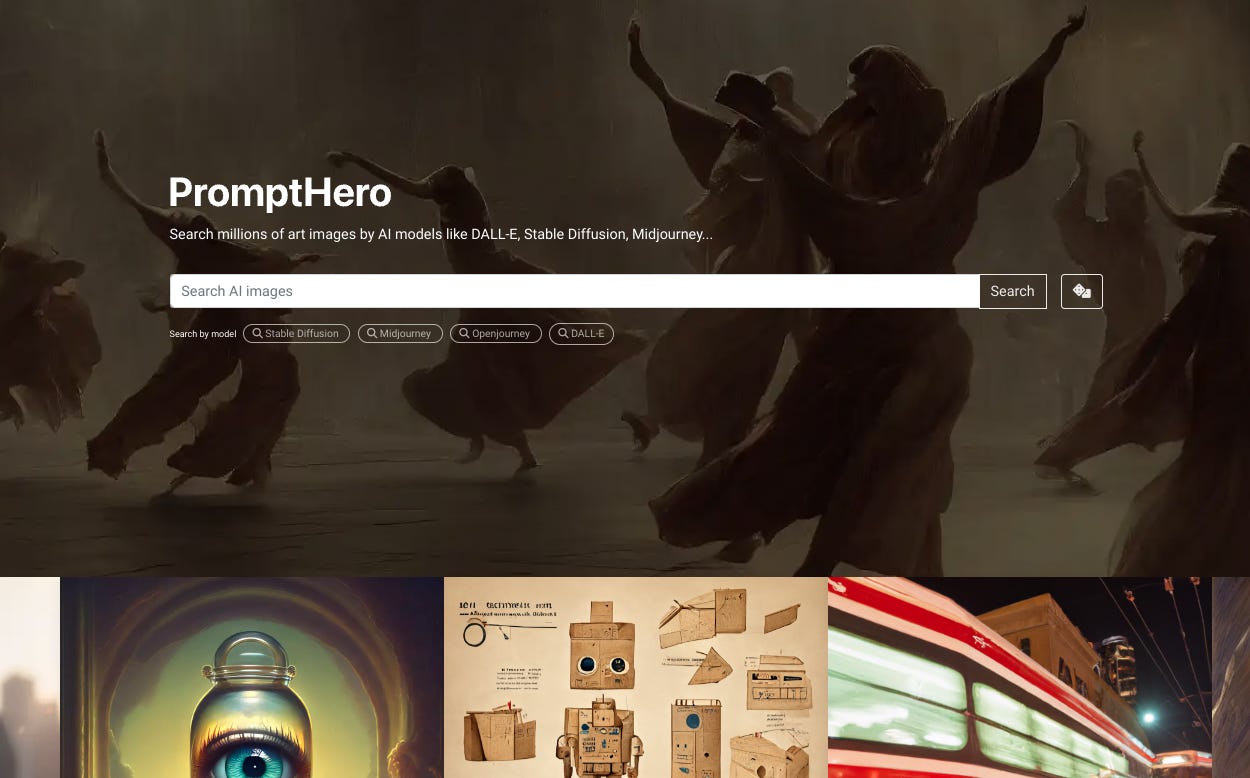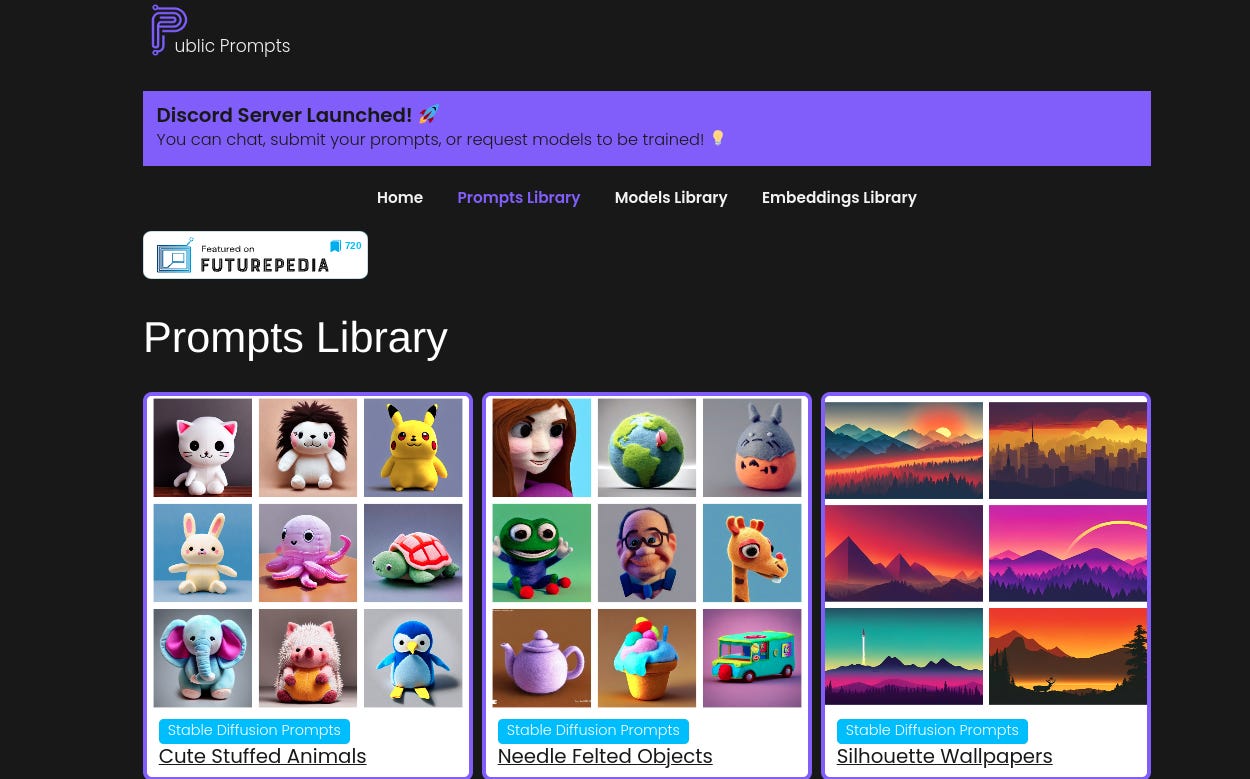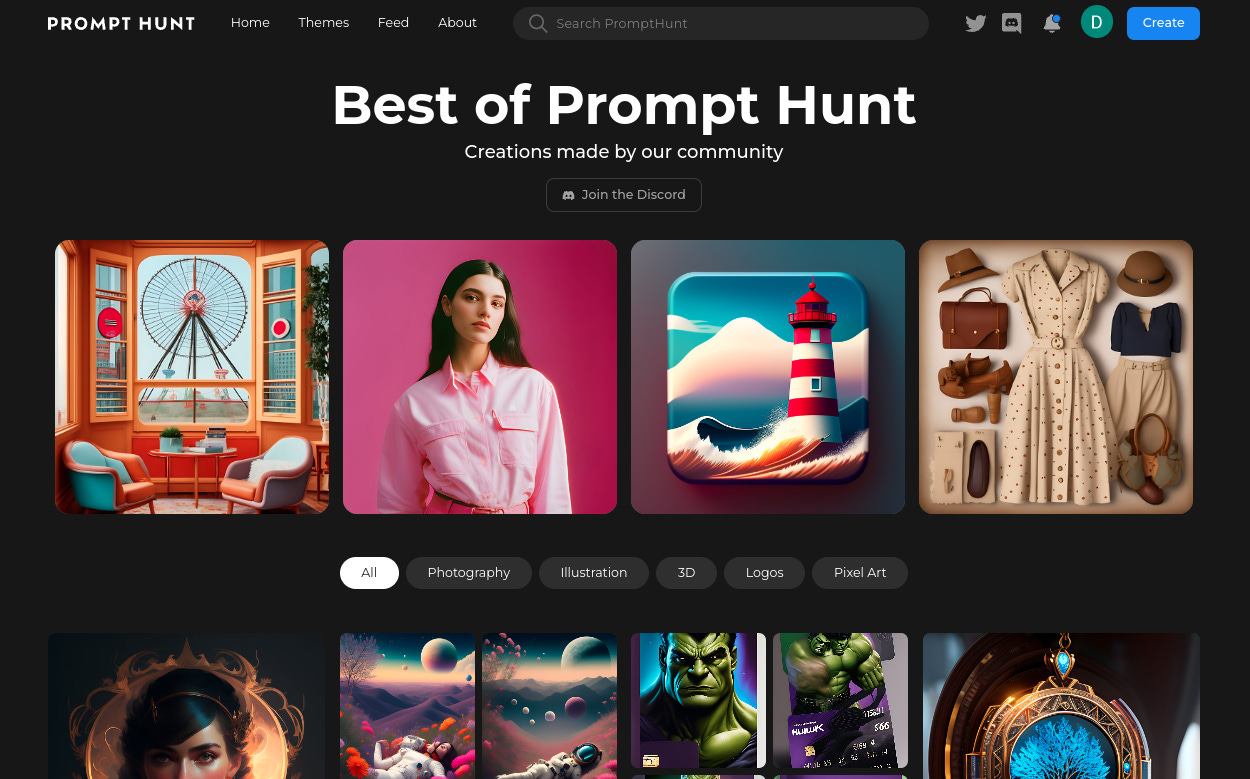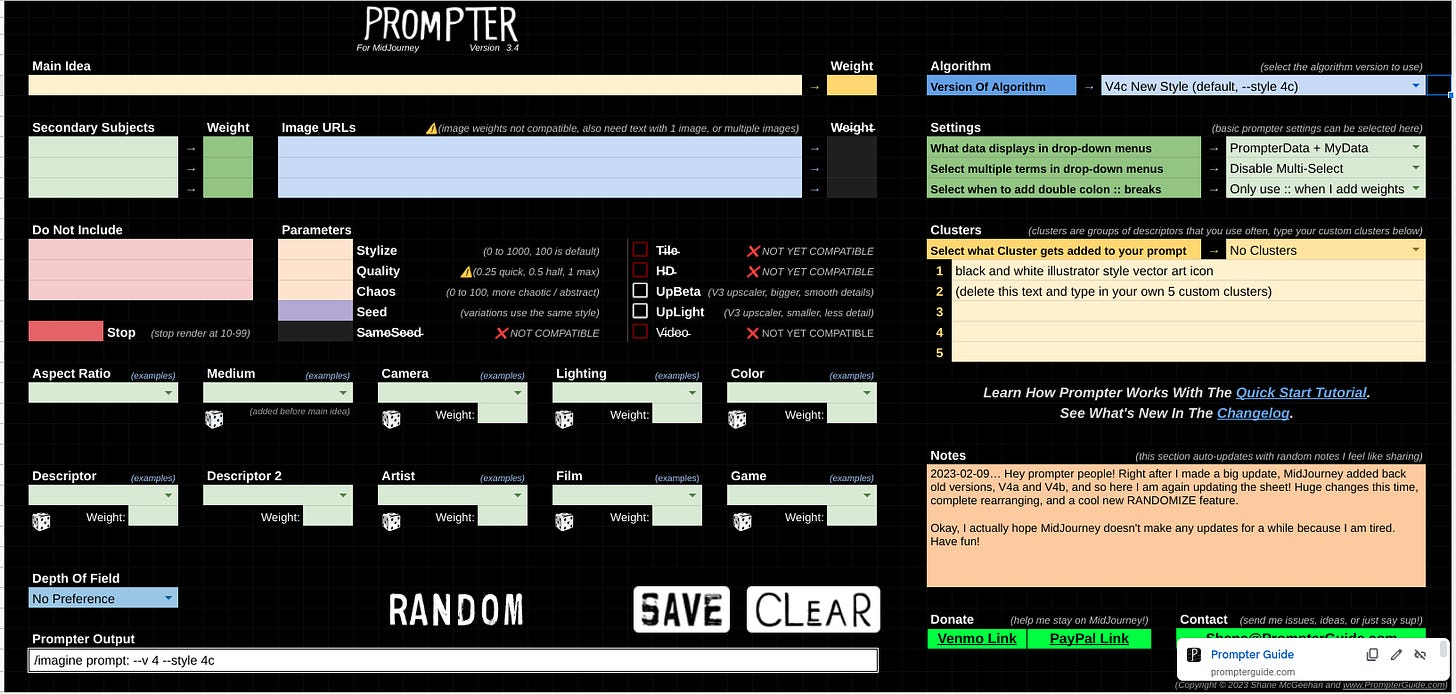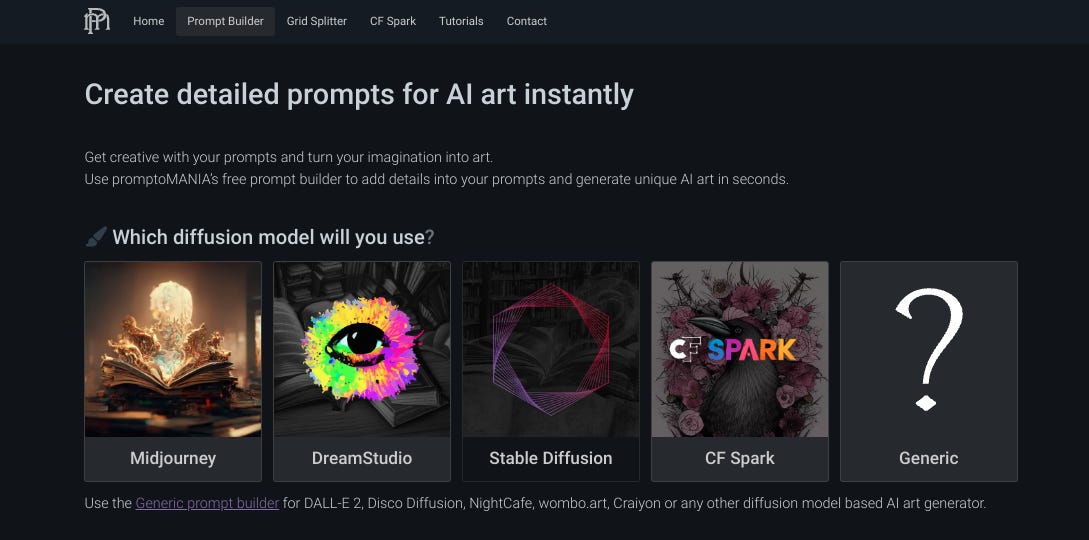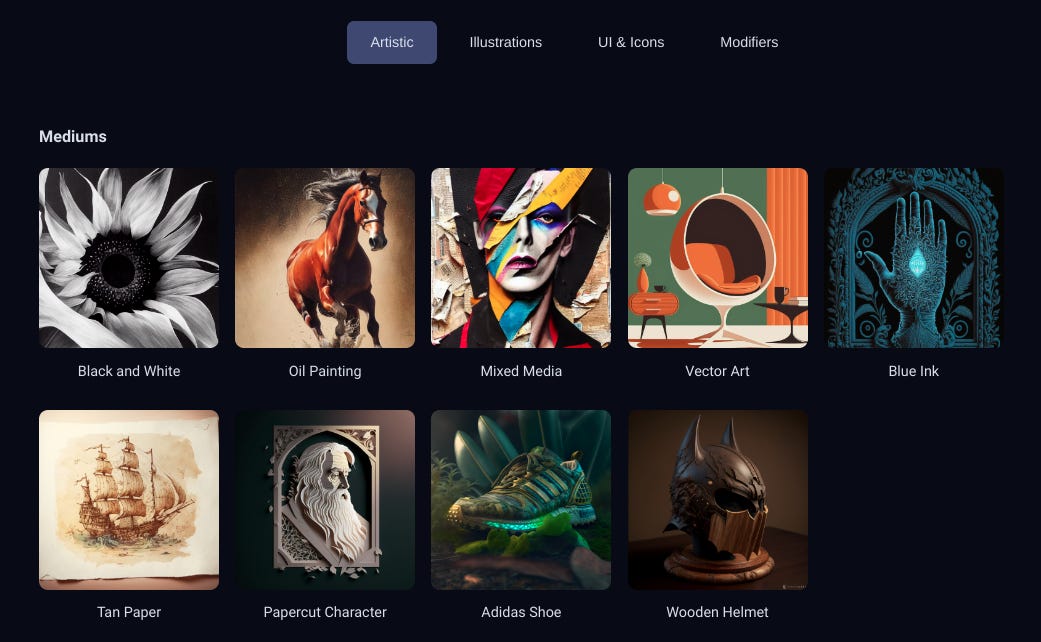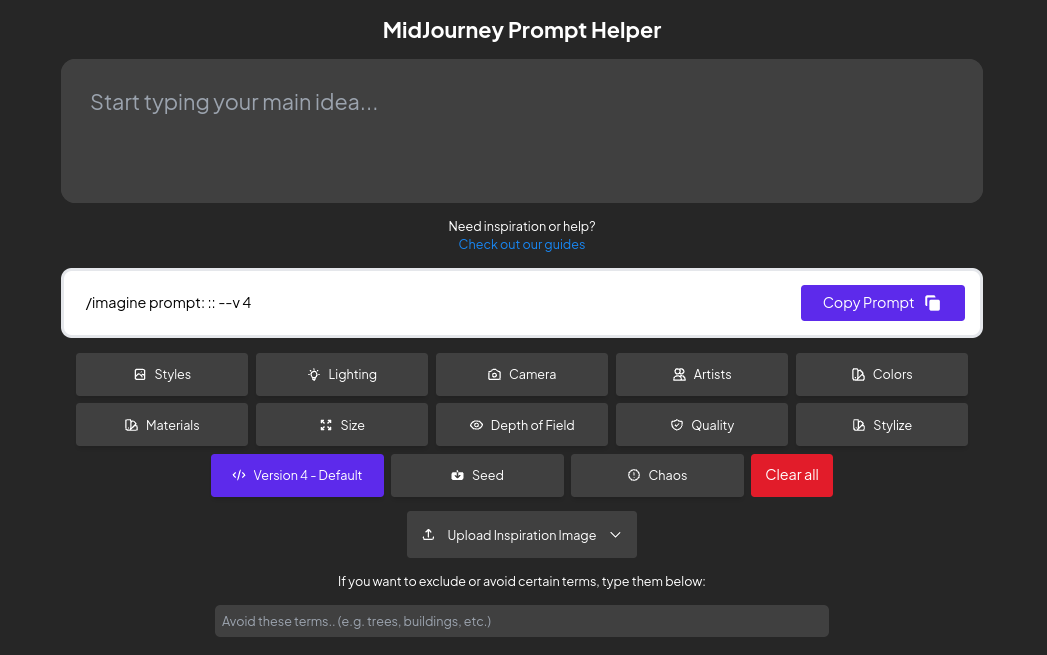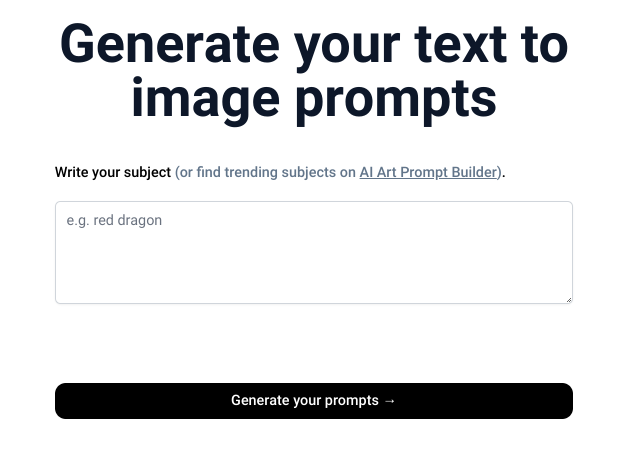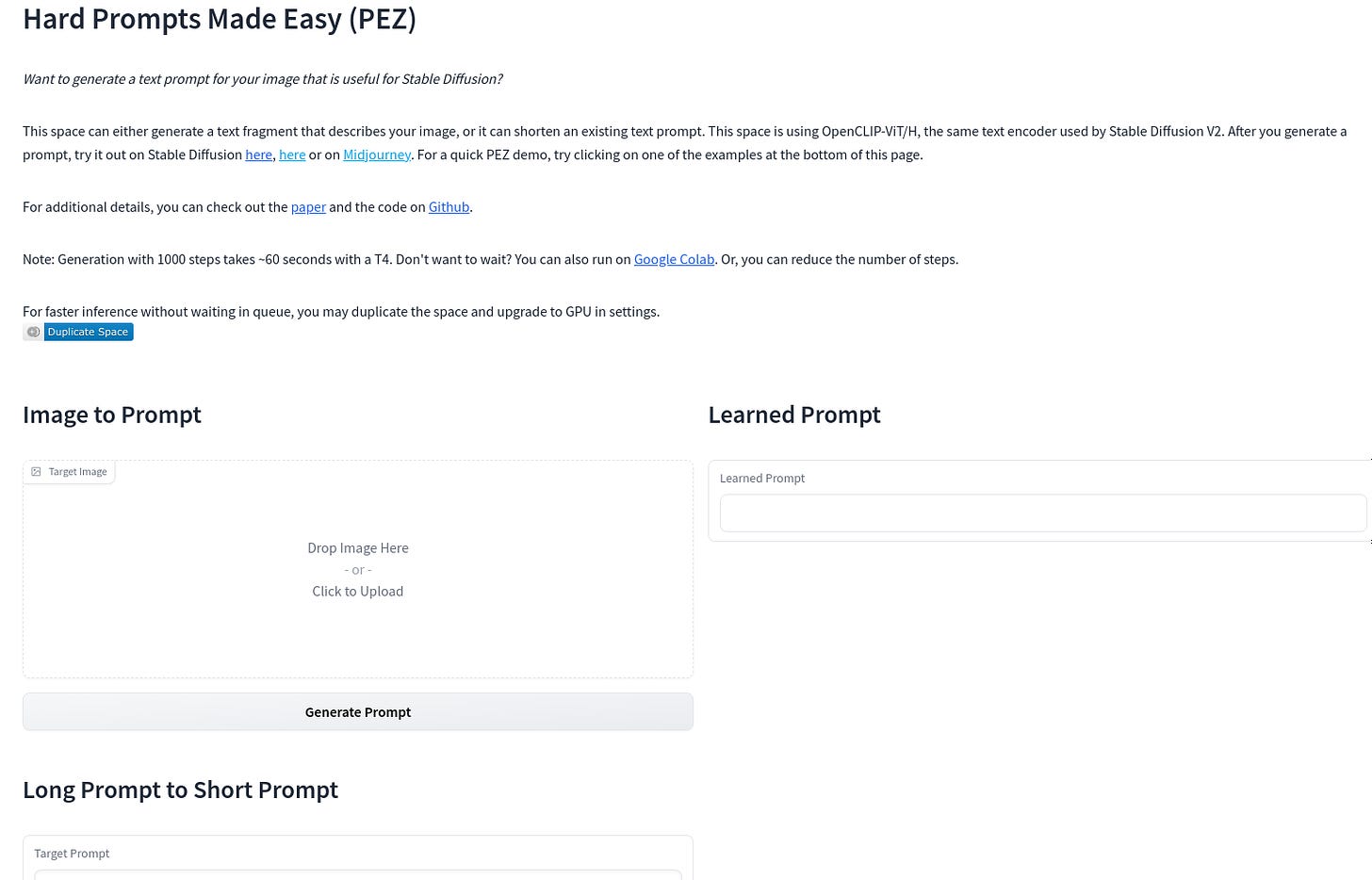Here’s a Whole Bunch of Sites to Help You With Image Prompts
Get inspiration and help for your text-to-image prompts. Whether you use Stable Diffusion, Midjourney, or even DALL-E, these sites and tools are worth a look!
Friends! Compatriots! Fellow humans!
This is I, Daniel, and most certainly not an AI-powered chatbot taking over the newsletter.
I’m sure many of you are fans of text-to-image shenanigans, much like myself.
That’s why my monthly posts about the best Midjourney prompts seem to be especially popular.
So I’ve decided to dig through my ever-growing bookmark list of all things AI and put together over a dozen tools that help with text-to-image prompts.
I hope you find some inspiration here!
Visual reference libraries
These sites let you explore collections of AI-generated images and discover the associated prompts. It’s a great way to get inspired.
1. Lexica (Stable Diffusion)
Lexica is the OG of visual prompt libraries. It’s a massive database of images generated via Stable Diffusion, with prompts attached.
You can search the library, explore styles related to a selected image, and easily copy text prompts to use elsewhere. You can even generate images directly on the site. Lexica is definitely one of the most complete reference libraries for Stable Diffusion.
2. PromptHero (All)
Unlike Lexica, PromptHero isn’t limited to just Stable Diffusion and features prompts for other text-to-image art generators. It even has a section dedicated to ChatGPT.
In addition to a search bar, PromptHero organizes images into a few top-level categories like “Anime,” “Architecture,” “Landscapes,” etc. making it easier to browse images related to the same theme.
3. Public Prompts (Stable Diffusion)
Public Prompts, run by a one-man team, features a more limited collection of Stable Diffusion prompts.
In addition to text prompts, it also showcases a few trained Stable Diffusion models that you can download and use (if you’re a bit more tech-savvy).
4. Prompt Hunt (All)
Prompt Hunt is another service that covers more than just Stable Diffusion. The site lets you search, browse by theme, and filter by your preferred AI art generator.
Much like Lexica, Prompt Hunt also gives you the ability to directly create images on the site, although you’re limited to a small number of free credits.
Prompt builders
These tools act as step-by-step wizards that let you gradually build up a prompt from scratch by picking from dozens of art styles, camera angles, and other modifiers.
5. Prompter (Midjourney)
I’ve already covered Prompter in an earlier article. It’s a very detailed, full-featured Google Sheet that lets you customize all possible aspects of your Midjourney prompt. Shane, the guy behind the tool, continuously keeps it updated as new Midjourney features get released.
If you use Midjourney, Prompter is the ultimate prompt builder, in my opinion.
6. promptoMANIA (All)
promptoMANIA is great if you need an all-in-one prompt builder. It covers most major diffusion models and also includes a “Generic” option to use on other sites.
It carefully guides you through picking your subject, styles, artist tags, and other relevant descriptors. You also get nice visual references for the modifiers, giving you a decent idea of how your final image might turn out.
7. Jrnylist (Midjourney)
Jrnylist offers a rather limited amount of predefined prompts, but it does include visuals to help you find a style you like. (Perhaps to use in a more robust tool like Prompter.)
Note: While you can click on multiple styles to add into your prompt, Jrnylist currently just stacks them together without removing any overlaps. So you’ll have to manually clean up your prompt to avoid duplicate modifiers.
8. MidJourney Prompt Helper (Midjourney)
While perhaps not as exhaustive as Prompter, MidJourney Prompt Helper has a neat user interface and lets you customize the prompt in multiple ways.
You can pick from multiple styles, lighting options, camera angles, etc. and even specify things you’d like to avoid in your image. There are also helpful visuals for many available selections.
Automated prompt generators
These essentially do the work for you. All you need is a general idea about your subject or scene, and the tool will automatically spit out multiple suggestions based on it.
While largely useless if you’re going after a specific look, these are fun for playing around and getting a bit of creative inspiration.
9. Stable Diffusion Prompt Generator
As the name woud suggest, this one’s optimized for Stable Diffusion. It takes a starting text string and appends a few alternative prompts for you to test.
I actually wrote about the Stable Diffusion Prompt Generator in October last year. My post even includes a showcase of a few resulting images based on the prompts it generated.
10. Midjourney Prompt Generator
The Midjourney Prompt Generator is the Midjourney version of the above. (Duh.) It spits out multiple prompts which often include Midjourney-specific tags like “--ar” (to set the aspect ratio). Pick it if Midjourney is your thing.
11. AI Prompt Generator
AI Prompt Generator takes a somewhat different approach.
Instead of programmatically building prompts for a specific AI model, it creates a narrative around your subject, describing the setting in great detail using natural language. You can then plop it into any text-to-image program.
Image-to-text tools
These sites are fantastic if you want to reverse-engineer a particular image.
While most of them are trained for Stable Diffusion, there’s nothing stopping you from using the resulting prompts in Midjourney or DALL-E. In my experience, the outcomes are often pretty close regardless.
Pro tip: I’d encourage you to run your target image through each one of these. The tool that gives you the closest match will vary depending on the input image, so there’s no universally “best” option here.
12. CLIP Interrogator
CLIP Interrogator is perhaps the oldest of the bunch. I covered it back in October, and the tool still holds up.
EDIT June 11, 2023: The original CLIP Interrogator appears to be discontinued, but there’s a CLIP Interrogator 2 with a few bonus options.
It gives you a few customization options where you can pick the Stable Diffusion version and the “mode” setting. The site now also features a neat “Analyze” tab that breaks down your prompt into underlying components like “Artist,” “Medium,” etc.
13. Img2Prompt by Methexis
The Img2Prompt by Methexis is a slightly tweaked version of the CLIP Interrogator.
I find that it often gives very different results, so if you’re not getting a good match using the CLIP Interrogator, you might have more luck with this one.
14. PEZ Dispenser
Funkily named PEZ Dispenser has a few extra tricks up its sleeve. In addition to reverse-engineering an image, you can use it to condense an existing text prompt into a shorter one. (Great for those insanely long splatterprompts.)
You can even specify the exact length you want the resulting prompt to be, although you will inevitably sacrifice some details if you make it too short.
Over to you…
What do you use to come up with AI art prompts? Do you prefer to just experiment on your own or get inspiration from others? Are you familiar with any helpful sites and tools that I didn’t cover?
Let me hear your input. Drop me an email or leave a comment below.

